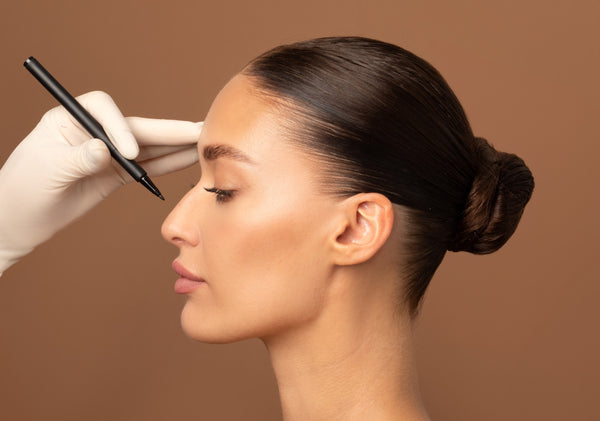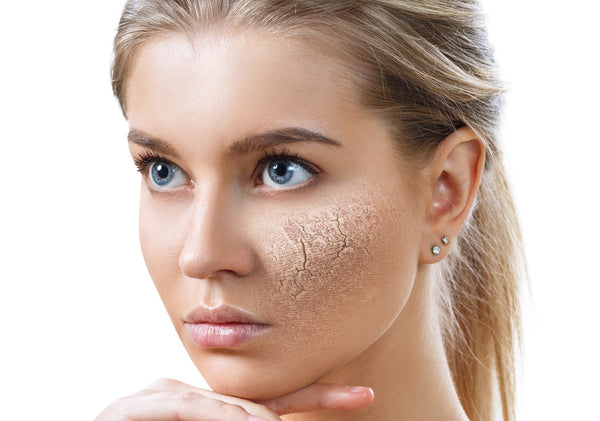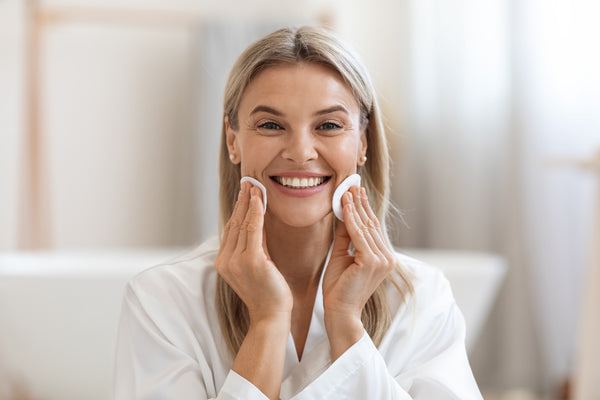Sweet or Sour? The Impact of Sugar on Skin Health

Chances are, you’re familiar with the risks of eating too much sugar — cavities, weight gain, the jitters. We all love a sweet treat, but have you ever wondered about sugar’s effects on skin?
Research is full of evidence on low-sugar diet benefits, but what does the science say about sugar and healthy skin? MD GLAM is here to investigate.
In this guide, we take a deeper look at what happens to your skin when you have too much sugar, as well as expert tips for balancing sweet cravings with radiant skin.
The Science Behind Sugar and Skin
First, the big question: is there actually a connection between diet and skin health? Absolutely! A healthy diet is a must for glowing skin, but too much sugar can spell trouble for your complexion.
The tricky part? Not all sugar is bad.
Experts separate sugars into two categories:
- Naturally occurring sugars: Found in fruit, veggies, and dairy
- Added sugars / sweeteners: Processed sugars, syrups, and sweeteners added to foods or drinks
Generally speaking, the culprits are added sugars because they don’t have nutritional value. Simply put, they’re empty calories — yummy and addictive but lacking substance. Plus, there’s almost always less sugar in whole foods.
So, what does added sugar do to your skin?
Top 5 Worst Sugar Effects on Skin
The aftermath of excess sugar on your skin is so prevalent, some derms have dubbed it “sugar face.” But what’s going on beneath the surface isn’t so sweet.
Bear with us while we get a little scientific…
Sugar’s complications on skin tie back to a process called glycation. This is when sugar in your bloodstream attaches to proteins, eventually forming advanced glycation end products (AGEs).
AGEs are bad news. Your body has ways to get rid of them, but too much added sugar creates more AGEs than your body can tackle.
Some research has uncovered many consequences of AGEs, particularly the skin-aging glycation relationship.
Here’s a closer look at the adverse effects:
1. Premature aging
Among the main byproducts of glycation and AGEs is premature skin aging. So what gives?
Two proteins affected by glycation are collagen and elastin, the building blocks of youthful, healthy skin.
AGEs disrupt these proteins’ abilities to function. They form “intermolecular cross-links” that make your skin less flexible and decrease cell turnover (where your skin replaces dead skin cells with fresh ones).
In other words, it interferes with your skin’s natural regeneration. Over time, this toxic relationship between collagen and sugar prompts premature signs of aging like wrinkles, dullness, sagging, dryness, and thinning.
2. Weaker skin barrier
Your body’s unsung hero is the skin barrier, its built-in bodyguard that fends off external threats and locks in hydration.
Unfortunately, glycation weakens the skin barrier, so it can’t self-repair and protect. What’s worse, AGEs also prevent your body from making antioxidant enzymes, proteins that shield you from cell-damaging free radicals.
Therefore, you’re left exposed to toxins from UV rays and pollution, increasing your risk of itchy, infected, or inflamed skin.
Speaking of inflammation…
3. Inflammation and flare-ups
For those with inflammatory skin conditions, diet can dramatically affect symptoms. Sugar-heavy diets can especially exasperate conditions like acne, psoriasis, rosacea, and eczema.
Foods with a high Glycemic Index (GI) spike blood sugar, leading to inflammation and excess oil. This can make existing acne worse and encourage new sugar-induced acne. Yikes.
Inflammation also happens because of high sugar intake, which makes your body release cytokines (proteins that instruct the immune system). The result? More eczema flare-ups and aggravated autoimmune conditions like psoriasis and rosacea.
4. Dark spots and hyperpigmentation
Hyperpigmentation (dark skin patches) is typically harmless but can be annoying. This happens when your body overproduces melanin.
What triggers this excess melanin? You guessed it: glycation.
5. Dehydrated skin
Like coffee or alcohol, sugary drinks and foods are natural diuretics, which make your bladder work overtime. That water loss increases blood sugar and decreases skin moisture, leaving skin dry, itchy, dull, and even wrinkled.
So, can you counteract sugar’s effects on skin? With the right habits, you bet.
6 Tips To Reduce Sugar Intake for Happier Skin
If your skin is suffering from an unchecked sweet tooth, you’re so not alone.
On average, Americans down 17 teaspoons of added sugar daily — way more than the recommended 6-9 teaspoons limit the American Heart Association (AHA) suggests.
Here are some top tips to keep your skin happy and healthy without forsaking your sweet tooth:
1. Practice moderation and gradual shifts
Sugar isn’t an all-or-nothing game. Like all life’s pleasures, moderation is key. It’s better to concentrate on adding good foods instead of just taking away “bad” ones.
Considering quitting added sugar altogether? Don’t go cold turkey. Sugar is addictive, so withdrawal symptoms are intense. Instead, taper down your intake bit by bit.
2. Swap added sugar for the real thing
The drawbacks of added sugar don’t apply to natural sugars. You can still indulge without settling for synthetic sugar alternatives.
Instead, make your meals colorful, nourishing, and tasty with fruits, vegetables, and healthy fats topped with delicious skin-friendly spices like cinnamon, garlic, or rosemary.
3. Check the labels
Avoid sugar overload by always perusing nutrition facts, ingredients, and serving sizes.
Look for “Added Sugars” under “Total Sugars” — that’s the number to check. If it’s sugar or syrup, it might appear as “Total Sugars” under the “Total Carbohydrates.”. Try to aim for 5% DV (Daily Value) or less.
Keep in mind, some companies can be stealthy, sneaking hidden sugars in “diet” foods.
Some incognito added sugars include:
- Fruit nectars
- Juice concentrates
- Corn sweetener
- Agave
- Honey
- Barley malt
- Turbinado
- Cane juice
- Molasses
- Almost anything ending in -ose (e.g. sucrose, dextrose, maltose)
- Syrups (e.g. corn syrup, maple syrup)
Remember, sugars are simple carbs. Instead, you want complex, whole-food carbs.
4. Try a Mediterranean diet
Many dermatologists tout the benefits of a Mediterranean diet centered on healthy fats and plant-based foods. Meals consist of anti-inflammatory, antioxidant-rich, and anti-aging foods.
Even if the Mediterranean diet isn’t for you, focus on getting the right nutrients from all five food groups. Some essential nutrients for healthy skin include antioxidants, Vitamin C, and Vitamin E.
5. Keep stress in check
Curling up with a pint of ice cream to handle a hard day? Guilty, your honor.
But turning to sweets for stress relief can do more harm than good. In the long run, the inevitable sugar crash and negative impacts on your skin only stress you out more.
Instead, practice healthy coping mechanisms like calling a friend, yoga, or deep breathing.
6. Counteract dehydrated skin with H2O
Combat sugar’s skin-dehydrating properties with the moisture-boosting benefits of simply drinking water! How many cups is “enough” varies, but 4-6 cups is a good start.
Add some extra hydration and nutrition with water-rich snacks like cucumber, bell peppers, melons, and tomatoes.
And don’t forget to hydrate from the outside-in with a rich, dewy moisturizer!
Sweeten Up Your Complexion with MD GLAM!
The effects of excess sugar on skin can be scary, but ditching dessert altogether? We’d never advocate for that. After all, a little sweetness is good for the soul.
Our stance is this: Stay mindful about sugar intake, so you stay glowing from the inside out.
Another healthy habit to amp up radiance? Keep a consistent skincare routine stacked with high-quality, expertly developed products for youthful, luminous skin.








